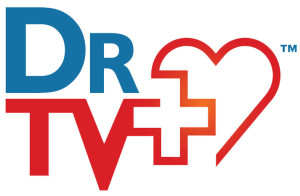
Credit: Kansas State University Sam Emerson, doctoral student in food, nutrition, dietetics and health, offers tips for avoiding that second piece of pie.
An important part of holiday meal-planning is deciding which high-calorie foods to splurge on and which not to invite onto the plates, according to a Kansas State University researcher.
Sam Emerson, doctoral student in food, nutrition, dietetics and health, Midlothian, Texas, offers tips for battling overindulgence of holiday treats.
Emerson’s No. 1 piece of advice for people trying to maintain weight and stay healthy over the holidays is to have a plan before they are faced with a buffet or table full of options.
“Eating food that is not nutritious is commonly part of celebrating, but it can become problematic if we make no effort to curb the splurging,” Emerson said. “We need to go in with a plan for how active we’re going to be, how much we’re going to eat, and whether we’ll allow ourselves dessert. That way, you can know later to not eat a second piece of pie because you already ate the one piece of pie you were going to have.”
Emerson advocates moderation rather than strict avoidance because typically even if people plan to not eat dessert, they usually end up partaking. At that point, their “all or nothing” mentality switches to “all” and the floodgates open for seconds and thirds.
Emerson, who specializes in post-meal metabolism research, said some desserts will impact your waistline more than others. Pecan pie is the heftiest of the traditional Christmas pies. A one-eighth piece, which is a small sliver, is about 500 calories. In comparison, the same size slice of pumpkin pie is 320 calories. Sweet potato pie is the least calorically dense, weighing in at just under 300 calories, Emerson said.
To avoid saving room for dessert, Emerson advises loading your plate with green beans, salad or other plant-based offerings. He said the evidence is clear that if you fill your plate with vegetables first, you will eat up to 10 percent fewer calories overall.
Non-dessert dishes and drinks that are calorically dense include stuffing, mashed potatoes and eggnog. According to Emerson, a standard 1-cup serving of stuffing has 350 calories; a cup of mashed potatoes has nearly 250 calories; and eggnog has about 450 calories per cup.
“Many people don’t drink just one cup,” Emerson said. “If you drink two cups, that’s nearly 1,000 calories, which is about half a moderately active person’s recommended intake for the whole day.”
Emerson advocates exercising to help balance caloric intake and output. He said research shows just one session of exercise up to 15 hours before a large, high-fat meal helps the body to healthfully digest the meal with fewer effects on glucose levels, blood lipids and inflammation.
“You could exercise in the morning, eat a really large meal that evening and still see benefits from your earlier exercise in terms of how your body processes the meal, which is pretty incredible,” Emerson said.
Between meals, Emerson advises putting away sweets, like chocolates or cookies. Research shows that when food is readily available, people eat more than is best.
“If you leave sweets out where you’ll walk past them several times a day, no matter how hard you try, you’re going to grab that brownie every now and then,” Emerson said.
Emerson also offers these tips:
• Don’t skip meals. Some people avoid eating breakfast on Thanksgiving or skip dinner the night before a Christmas meal, thinking they are “saving up,” but research shows they usually end up eating so many calories later at the larger meal that the calorie tally comes out to work against them.
• Wait after your first portion. Before going for seconds, spend 5-10 minutes talking to the people around you. After you socialize, see if you’re still hungry.
“Overall, I recommend trying to focus on being with family and friends,” Emerson said. “Eating is a part of the holidays, but if we aim to make it more about enjoying time with people and less about eating a lot, that can help us make more beneficial decisions for our health.”
